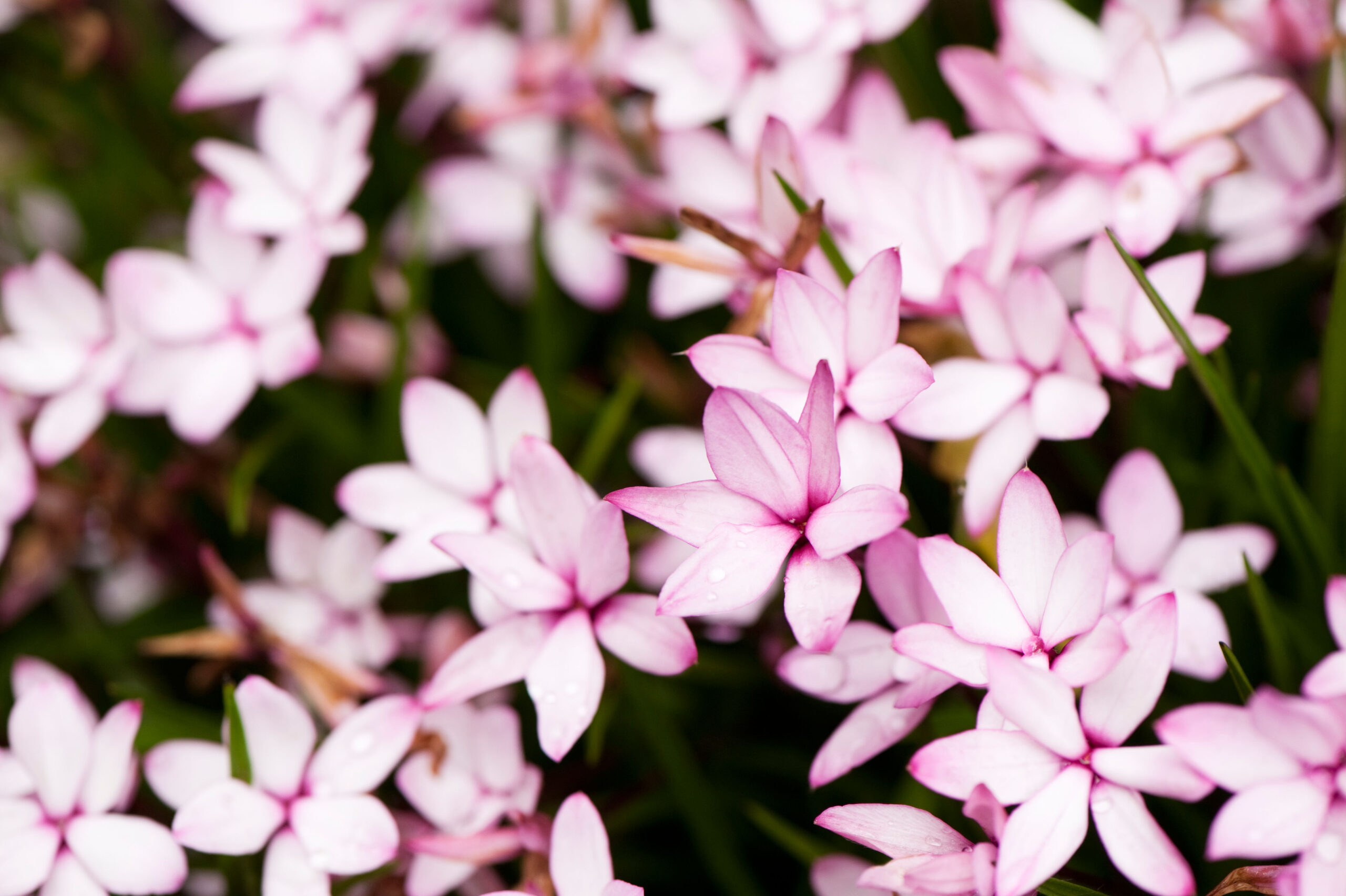Rhodohypoxis milloides ‘Pintado’
€12.50
Frequently Bought Together


Description
Rhodohypoxis milloides ‘Pintado’ (Rose Grass)
Quick Facts
- Common Name: Rose Grass, Painted Rose Grass
- Botanical Name: Rhodohypoxis milloides ‘Pintado’
- Plant Type: Bulbous perennial
- Mature Height: 8-12cm
- Mature Spread: 10-15cm
- Flowering Period: May to September
- Flower Colour: Pink with white centres and painted markings
- Foliage: Narrow, grass-like, hairy leaves
- Hardiness: Hardy with protection (RHS H4)
- Soil Requirements: Well-drained, acidic to neutral soil
- Aspect: Full sun to partial shade
- Maintenance: Low maintenance
Description
The Rhodohypoxis milloides ‘Pintado’ is a charming miniature perennial that brings delicate beauty to rock gardens, alpine plant collections, and container displays. This enchanting South African native alpine plant produces masses of small, star-shaped pink flowers in soft pink tones, each adorned with pristine white centres and distinctive painted markings that give this cultivar its artistic name.
Despite its diminutive stature, this little gem delivers remarkable flower power throughout the growing season. The continuous succession of blooms emerges from neat tufts of narrow, grass-like foliage that forms attractive, low-growing clumps perfect for rock garden plants. Each pink star flower, though small at just 2cm across, creates maximum impact when planted in groups or drifts in alpine gardens.
This alpine treasure thrives in well-drained soil conditions and brings a touch of the exotic to cooler UK and Irish climates. Its compact habit makes it perfect for rock gardens, alpine troughs, raised beds, or as edging plants along pathways. The plant’s ability to naturalise gradually creates carpets of colour that return faithfully each year, making it an excellent perennial choice for low-maintenance gardens.
The Rhodohypoxis milloides ‘Pintado’ pairs beautifully with other alpine plants, dwarf spring bulbs, and small ornamental grasses, creating intricate tapestries of texture and colour in specialised garden settings and container gardening displays.
Caragh Garden Notebook
Plant 5-8cm apart and 3-4cm deep in well-prepared, gritty soil. We recommend adding plenty of sharp sand or fine gravel to heavy soils to ensure excellent drainage – this is absolutely critical for success. In containers, use a 50:50 mix of good quality compost and horticultural grit. These plants despise waterlogged conditions, particularly in winter. Create raised planting areas or mounded beds if your soil tends to hold water. A neutral to slightly acidic pH (6.0-7.0) suits them best, so avoid lime-rich soils or add ericaceous compost if needed. In autumn, allow the foliage to die back naturally – this feeds the underground rhizomes for next year’s display. Apply a light mulch of grit around the plants to protect from excessive winter wet. Remove any dead foliage in early spring before new growth appears.
Divide established clumps every 3-4 years in early spring, carefully separating the small rhizomes. Each division should have growing points attached. This is also the best time to refresh the soil with fresh gritty compost.





